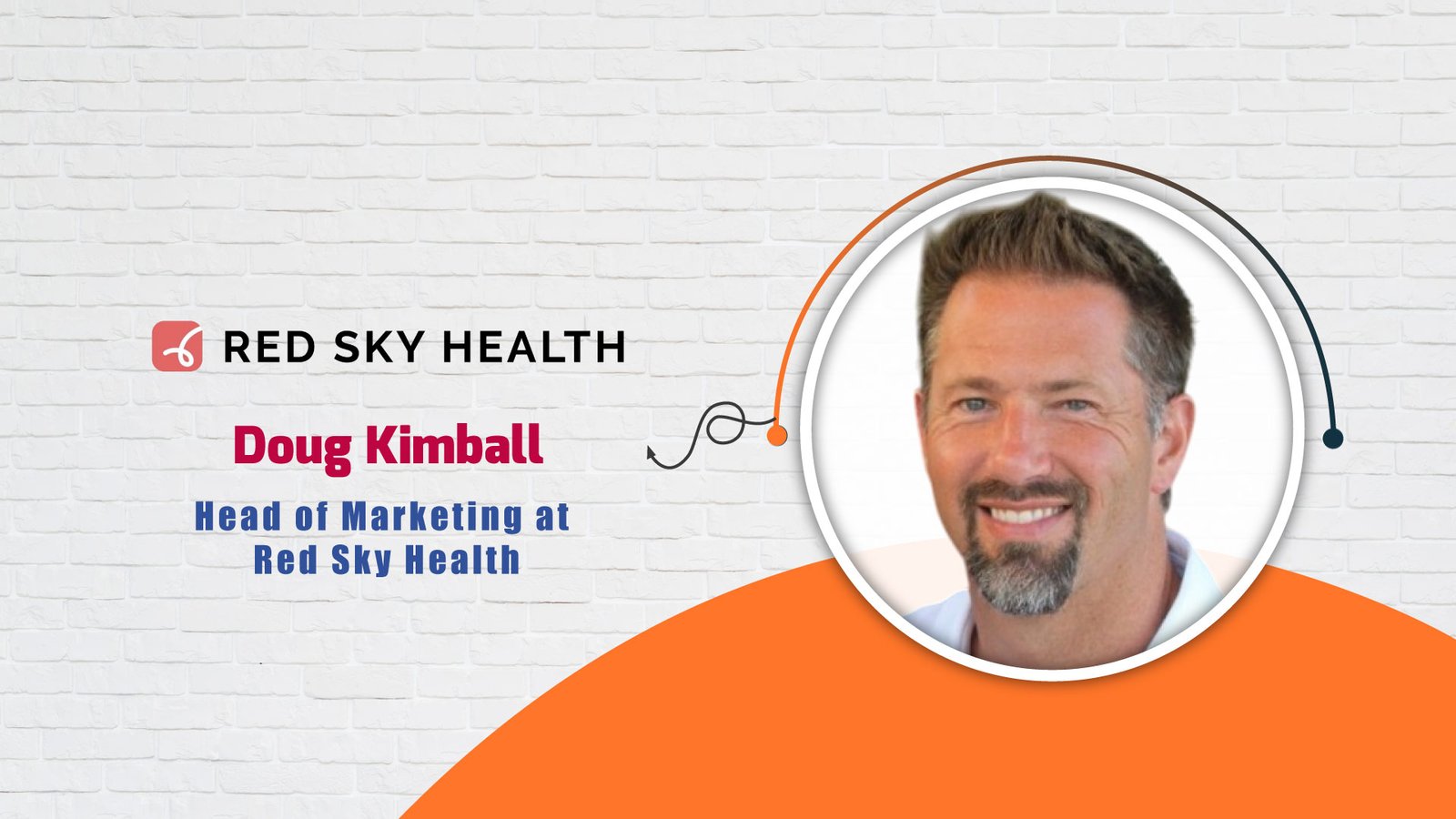Red Sky Health’s AI reshapes care by merging data precision with genuine human connection in healthcare delivery.
Doug, stepping into your role as Head of Marketing at Red Sky Health, how has your career path prepared you to navigate the intersection of cutting-edge technology and deeply human-centered care?
I’ve been working with complex solutions across various technology providers for many years, helping to translate features/functions into conversations that tell the story in an engaging manner. What I like about Red Sky Health is that they are focused on creating better options for patient care through the use of technology. Driven by a curated data stream, human-centered care connects the member with their health conditions, demographics, medical teams, environment, and any other key factors impacting care so that it can be better managed. I see technology as enhancing the connection between the different constituents so they can collectively prioritize patients’ needs, preferences, and values to achieve better outcomes.
You’ve emphasized that the future of healthcare isn’t a choice between human intelligence and artificial intelligence. How do you envision the optimal partnership between the two in clinical settings?
You are correct, as artificial intelligence needs to be used in concert with human intelligence. AI must complement and support human-led activities, much like a person uses Generative AI to create imagery, perform research, suggest content ideas, write code, etc. In clinical environments, massive datasets can be queried to identify relationships between symptoms and drugs. It can also analyze causes, and present options quickly. This approach typically involves using AI with graph technology, as it enables users to ask multi-level queries and run pattern analysis. It is also very effective in isolating chronic condition causes and bringing new drugs to market. Again, AI should accompany or augment human empathy and wisdom instead of replacing it.
AI lacks context and emotional intelligence—yet it’s transforming medical workflows. How do you ensure that empathy remains central while technology scales care delivery?
This is where keeping the human aspect in the loop is a must. Without context, it is difficult to diagnose or effectively explain a challenging medical issue in a way that a frightened or confused patient will not only understand but accept. Bringing in the emotional side of things from a medical professional provides an opportunity for empathy. In terms of scaling care delivery, where mundane tasks can be handled and streamlined by using AI, this (in theory) should create more opportunity for a provider to listen to the patient and diagnose and less time on low-impact work. When used effectively and in a partnership style, this should lead to more personalized care, better outcomes, and a more human experience for patients and providers.
Claim denials continue to drain valuable time and resources from healthcare practices. What systemic inefficiencies has Red Sky Health targeted with AI to address this challenge?
Red Sky Health has created a proprietary AI platform called Daniel that recommends actions to reduce claims denials. A play on words to the term “Denial”, Daniel identifies claims issues, provides guidance to fix them in real-time, and programmatically resubmits the claim. We help providers eliminate the traditional ‘swivel chair’ process that involves having a resource look at one screen, identify what caused a claim to be denied, find the right codes, and then on another screen make those changes and resubmit them. Daniel enables them to manage large numbers of claims in a few minutes through data review, pattern analysis, and historical data to identify issues and automatically correct them, which streamlines this workflow tremendously. Red Sky Health leverages AI to target inefficiencies tied to inconsistent productivity, billing, human capital, attrition rate, untimely collections, and domain knowledge drain due to changing regulations.
When administrative staff spend hours reworking claims, patient care takes a backseat. How has AI shifted the balance back toward more face-to-face interaction in the practices you serve?
Red Sky Health is designed to help providers and claims management teams spend less time on administrative work and to eliminate error-prone repetitive processes that humans hate to perform. So as patients come into the office for care, ask questions or try to manage their healthcare proactively, admin teams have the time to shift their focus to patient care and not just technology challenges. Everything from scheduling, prior authorization, transcribing of medical notes, billing, and denial remediation can be automated through various forms of AI. This allows the redeployment of humans to focus on care management including health literacy.
Beyond automation, how does AI actively assist in improving outcomes during the claim resubmission process—not just in speed, but in accuracy and compliance?
Red Sky Health consistently updates its model as new or shifting codes and requirements occur. This is done automatically and in the background so nothing needs to be done by the user. If a new regulation is put in place, or the patient changes insurance providers, Daniel can identify those changes and address the claims denial in most cases. This impacts the patient by removing the worry out of the claims process. As work or life changes occur, a person may need to change insurance carriers, for example. They may have received care under one provider where a claim was submitted, but now they are under another insurance provider. Without AI-supported logic, that claim may be denied, as the person has a new insurance carrier. Our AI technology can identify that the patient received care and ensure the right codes are used regardless of insurance carriers and then resubmit for payment. This allows the provider to focus on caregiving and not on chasing codes or policies. For those areas where there may be a question, we have a quality control group that reviews outliers, updates the model, and removes any concerns from the provider teams. Our models are fully trained on correct coding edits, payer-specific reimbursement guidance, CMS regulations, AMA guidelines, etc., and we continually update them to be fully compliant with regulations in real time so care is not delayed.
With massive datasets flowing through healthcare systems daily, how do you approach using AI for real-time insights without compromising security or ethical standards?
The key differentiator is that, unlike the provider, we are not holding any personal health information or personally identifiable information (PII) as part of our process. We are also unbiased in that our AI is just focused on making code corrections, not on providing care guidance, diagnosis, or planning. As an organization, we are SOC2 compliant and are on the path to be HITRUST compliant. Also, all insights are extracted in real-time and leveraged for recommendations and/or shared. Consider the impact this can have on initiatives such as population health. This approach focuses on interrelated conditions and factors that influence the health of groups over the course of life. By identifying systematic variations in their occurrence patterns, and applying the knowledge gained, providers can develop and implement care activities to improve the health and well-being of those populations. By using AI and being freed from wasting time chasing claims errors, providers can gather more information about a patient to identify trends and recommend proactive care suggestions, helping to prevent problems before they occur or become worse.
What are some of the most misunderstood aspects of implementing AI in smaller medical practices, and how do you overcome skepticism at the operational level?
There’s often a concern that this will add more to their workload, not reduce it. Or that it’s one more piece of technology they have to learn which may also change how they work. Beyond that, there are occasionally trust issues regarding whether the AI is making effective decisions. For all of these assumptions, we emphasize that this is a very low-touch process that can be easily implemented because it only needs access to historical data. We can show statistical results for our AI model and how it is making recommendations but, ultimately, we focus on how quickly and easily ROI can be obtained with minimal effort. It’s about solving real, immediate pain points in smaller practices with tools that fit the scale and culture of the practice. We accomplish this by starting with low-risk, high-impact use cases and showing early wins to build trust.
Compassion is non-negotiable in medicine. In what ways have you seen technology actually enhance the human touch, rather than detract from it, in the clinical setting?
Successful providers are leveraging both. They use AI to document patient-doctor interactions and automate appointment and medication adherence reminders, leaving the doctor to focus on the patient. AI-driven alerts on changes in vital patient statistics along with automated billing are other examples of how technology enhances care and frees up medical resources.
As AI becomes more deeply embedded in healthcare, how should industry leaders reshape their thinking to design systems that are both scalable and deeply human-aware?
Industry leaders should embed empathy mapping in the patient journey so it is more personal. This can be accomplished by establishing patient focus groups and getting them engaged in the design of these systems so they are partners. The next step is to focus the provider on scaling their attention and personalization as the patient’s journey evolves by designing AI systems to learn from feedback. Medical teams should also continually invest in AI literacy among providers to develop a new set of metrics that are patient-centered. In this way, the focus will be on what AI should do based on who is being served.
Quote: AI is transforming medical workflows, scaling care delivery at unprecedented rates, but keeping humans in the loop is a must. When used effectively, this human/AI partnership helps remove redundant and time consuming activity like rectifying denied claims so providers can focus on delivering more personalized care, better outcomes, and a more human experience for patients.

Doug Kimball
Head of Marketing at Red Sky Health
Doug Kimball leads the end-to-end marketing strategy for Red Sky Health, creators of a proprietary AI platform called Daniel that makes recommendations to reduce claims denials. Daniel identifies claims issues, provides guidance to fix them in real time, and programmatically resubmits the claim. Formed by healthcare and technology startup veterans, the Company’s mission is to ensure that healthcare providers are properly paid for their services by making sure that insurance claims denials are rapidly and comprehensively resubmitted and paid. To learn more, visit them at RedSkyHealth.com or follow them on LinkedIn.

